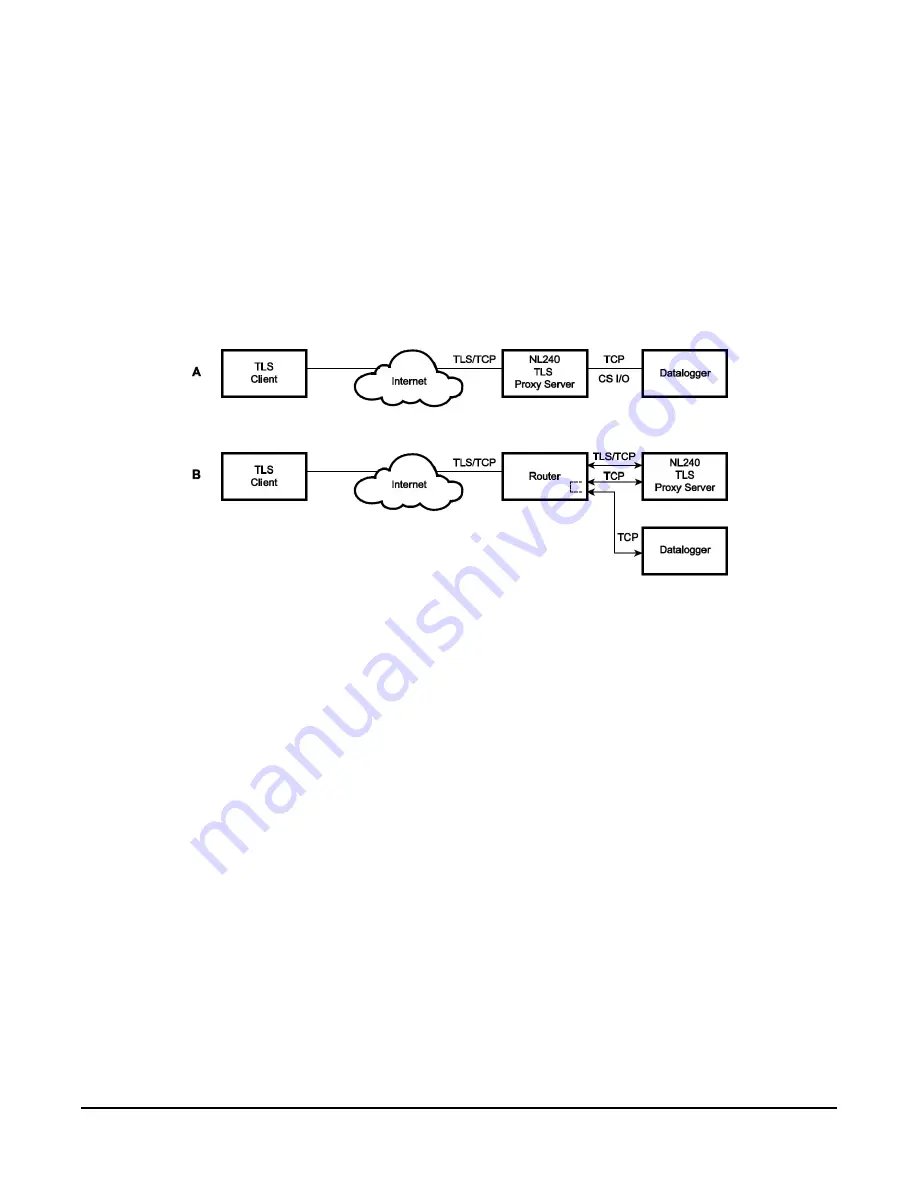
connection thus enabling communications with TLS clients. The TLS client can be a web browser
using HTTPS or another user-supplied TLS client. Any other client program that encrypts a
standard TCP connection using TLS may be used to establish a connection with the NL241 TLS
proxy server, and the NL241 will forward unencrypted TCP data to a data logger. In this way, a
remote TLS client can establish a TLS connection with a data logger.
The settings found in the TLS Proxy Server and TLS tab in
Device Configuration Utility
are used to
configure the NL241 TLS proxy server.
Two physical configurations are possible and the required settings differ depending on the
configuration chosen. The possible configurations are shown in
FIGURE 8-4. TLS proxy server configurations
Configuration A
In Configuration A, the NL241 decrypts TLS traffic and forwards the unencrypted TCP traffic to
the data logger over the CS I/O port. The NL241 is able to “learn” the IP address of the attached
data logger and will open a TCP connection on the “learned” IP address.
Configuration B
In Configuration B, the NL241 decrypts TLS traffic and forwards the unencrypted TCP traffic to the
data logger back out on the Wi-Fi port. The user must specify an IP address and TCP port
number for the forwarding TCP connection.
To configure the NL241 TLS proxy server to communicate with a data logger attached to the
CS I/O port or with a data logger over a Wi-Fi connection, open
Device Configuration Utility
and
configure the following settings.
NL241 Wireless Network Link Interface
35
















































